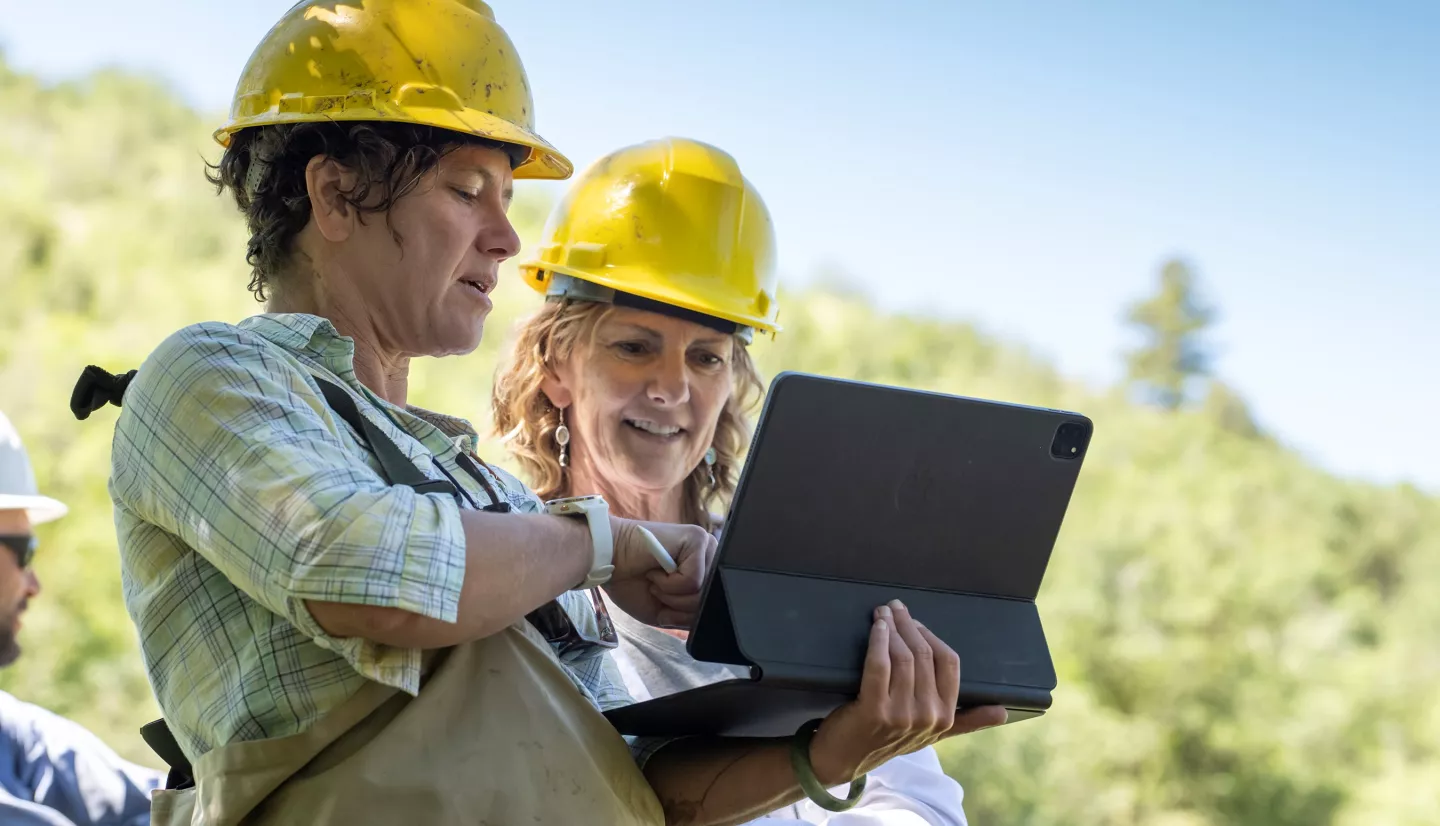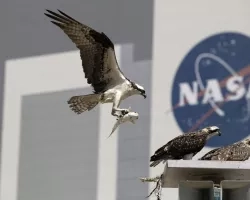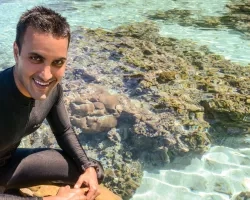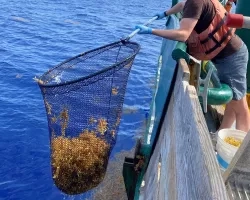Science mentor, world traveler, remote sensing teacher, research scientist, and Indigenous Peoples Pilot program lead – it’s hard to keep track of everything Cindy Schmidt does in her role as an associate program manager for the Ecological Conservation program.
For more than 25 years, Schmidt has helped transfer NASA Earth Science data and technology to federal, state, tribal and international organizations to enhance their decision support.
Or as she would say, turn data into information.
When describing to her family what she does for work, Cindy puts it this way:
“I look at images captured by satellites in space to see how Earth changes over time. Then, I work with people on the ground to use that information to make decisions about managing our natural resources.”
Hear what Schmidt had to say about the unexpected start of her remote sensing career, what got her hooked on applied sciences, and how NASA Applied Sciences projects have taken her all over the world.
The transcription below has been edited for readability and clarity.
How did you get started in this work?
My first career out of college was actually as an urban planner. I have a master’s degree in urban and regional planning, and I started off as a planner for various cities. But in the late 80s, I got the opportunity to live in the Netherlands for a couple of years. I went to a school there called International School for Geoinformation Science and Earth Observation (ITC), which is now recognized worldwide for its work in geoinformation science and Earth observations. Back then, they were just getting started with using this new technology called Geographic Information Systems (GIS).
While most of their focus was on air photo interpretation, they also exposed us to satellite imagery. Once I started learning air photo interpretation and dabbled a little bit in early GIS, I was totally hooked at looking at things from a different perspective both in space and time. I mean to me, being able to look at how places on Earth are changing over time from that perspective of space is incredibly powerful.
How has it changed?
And how has it changed over time? Wow, in so many ways!
“I think for me, since a huge part of my early to mid-career was doing image processing, or as I like to say, turning data into information, that’s where I’ve seen a ton of change.”
In the early days, everything was sort of command line and done on central computers and it took forever to download a Landsat scene. For example, to do a land cover classification, you submitted it to a central server and then got the results overnight the next day. I mean, it took forever, and heaven forbid if you wanted your vector data integrated with your raster data.
But now, of course, in addition to everything being on the cloud and the computers being so much more powerful, there’s a lot more focus on providing solutions. In other words, people don’t necessarily need to be experts in remote sensing to get a good land cover map or look at change over time.
How did you get involved in the Indigenous Peoples Pilot program?
About seven years ago, I started that program with really the intention of building the capacity of tribes to use geospatial technology for natural and cultural resource management. My interest in all of this really started back in the mid-90s when I was working on a project that was funded through the National Science Foundation (NSF) to build the capacity of tribal college faculty to use GIS. I got to go to the Navajo Nation and Salish Kootenai Tribal Nation in Montana, where I really learned about the challenges those communities face, but also about their deep cultural and spiritual connection to the environment, which really resonated with me.
A few years later, I also hosted and mentored several native American students at NASA Ames, which was really challenging, actually for many reasons, and clarified to me how poorly we as an agency were doing in terms of truly understanding and working with these communities.
As I got more involved with the Applied Sciences Program and eventually the Capacity Building program, I was really astounded at how much we were investing in developing the capacity of people in other countries to use Earth observation and not at all within these sovereign nations within our own boundaries.
Along with the program manager for Capacity Building, we decided to start this program where we could start working more closely with tribal nations. In my opinion, it’s so important for so many reasons. One is really recognizing the importance of indigenous knowledge in everything we do. And then also from biodiversity and ecological conservation viewpoint.
“The contribution from indigenous peoples globally is essential for maintaining biodiversity and protecting our important ecosystems.”
How do you share your knowledge with others?
The primary ways that I like to share knowledge with others is really through teaching, both teaching and capacity building. I started teaching remote sensing classes a long time ago at local universities and community colleges and just really loved it.
“I learned about teaching is being a good listener, which has really been important in my work with the Applied Sciences projects, which absolutely requires that ability to listen to end user needs.”
I’ve mentored students at NASA for many years, which is so important and incredibly rewarding. I also love talking to younger students in classrooms and telling them about all the amazing things that we do in the Earth sciences.
“Honestly, there’s nothing better than watching young people get excited about the work we do and watching those light bulbs go off when they understand the power of looking at the Earth from space.”
What early projects interested you in NASA Applied Sciences?
One of the very first applied projects that I worked on was called GRAPES. It has a great acronym, but it’s Grapevine Remote Sensing Analysis of Phylloxera Early Stress. This project used satellite and airborne remote sensing products to look at the health of grapevines during the invasion of this deadly root louse. It was just decimating the vineyards in Napa Valley. That root louse is called Phylloxera. So, we were trying to determine whether you could see the decline of the grapevines using near infrared imagery before it could be detected visually, which potentially could have a huge impact for vineyard managers planning treatment and other kinds of health strategies for the vineyards.
We were lucky enough to work closely with Mondavi Winery during that time, which required us to understand and learn quite a bit about vineyard management. At that time, the wineries weren’t really using geospatial technology, let alone remote sensing so while we were learning about vineyard management, we were teaching them about remote sensing and GIS.
So that was really what got me hooked on applied work. I mean, really showing how remote sensing and geospatial technology could help people do their job better, or help improve the environment, or increase their quality of life.
Where has your work taken you?
My work has taken me literally to all corners of the Earth. A lot of my job with the Ecological Conservation program involves me being the interface between our funded projects that are in our portfolio and the project PIs and their team.
Since all the projects have to have at least one end user, it really benefits us to get a deeper understanding of the needs and challenges and barriers to use Earth observation products and methodologies for decision making. The best way to do that is to go talk with the end users and the project teams directly. I do try to attend as many project meetings as possible, which means that I travel a lot.
“I’ve been so fortunate to travel to places like Mongolia to see how the Wildlife Conservation Service with cashmere goat herders, to Belize where I was able to see their efforts in preserving their amazing coral reefs, and to Idaho, where they’re using remote sensing for beaver reintroduction, and so many more amazing, cool places and people. I really do feel like I have the coolest job on the planet.”
What advice do you have for early career scientists?
My best advice is to be open to things that may be outside your wheelhouse. Every day I’m still learning so many things even this late in my career. I’ve been so lucky to be involved in agriculture, human health, wildfires, disasters, ecological conservation projects and programs, and I’ve learned so much from each and every one of them. It’s added a dimension in my career that I never could have planned so long ago but has been so incredibly fulfilling.



